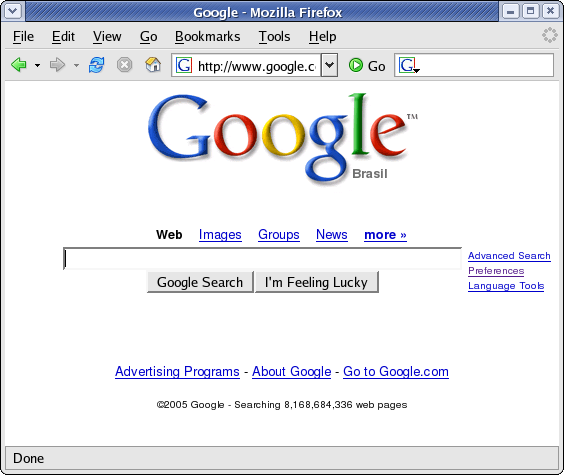There is a common UI guideline that seems to be routinely ignored when it comes to multilingual interfaces. Last week I noticed that Google breaks it in a particular impressive way. Go to google.com, click on “Preferences” and then select a new language under “Interface Language.” Let’s pick Georgian – I know you were always curious about how Google looked in Georgian.
You don’t get to see the colorful Georgian letters spelling “Google” but at least you get to see this cool script in other parts of the page. Now, let’s change it back. Click on “Preferences” again. (Actually, on “პარამეტრები”, but you hopefully remember where to find this link). Now stare at the preferences page in Georgian and try to figure out which of the following options means “English”: “ნეპალური”? “ტაგალოგური”? or maybe “ტაილანდური”? (Google offers you many more options, of course.)

Let’s pick one randomly. How about “ტაილანდური”? Let’s see what we got. (I am skipping the google.com page and going straight to the preferences.)

This looks a bit like the script on the menus in Thai restaurants, but it’s actually Laotian. This bit of trivia of course doesn’t help us find English, so we'll have to pick something randomly again.

Ok, at least we've got a Roman script. I am not sure what language this is, so let’s call it “Kesukaan” for now. It appears that some languages have easy names in Kesukaan – I see “Bahasa Uighur,” “Bahasa Ukraina,” and “Bahasa Portugis.” No “Bahasa Englis” or “Bahasa Inglis” unfortunately. I could cheat at this point and go for “Bahasa Portugis”. However, I can see only one bahasa that isn’t obviously not-English: “apaan sih?” I am feeling lucky, so I take my chance.

Kazakh. Since this is cyrillic script, I can actually find English in the list: “ағылшын”. But since most of you probably can’t, let’s pretend that I can’t either. In this case, it seems that my best bet is to pick from among the few languages shown with their English names. From among those, “Corsican” looks like the best bet.

Ok, we finally have a list of languages in which we can identify English quite trivially (“Inglese”). So, we are finally back to English:

What’s the moral of the story?
Users often choose system functions by mistake and will need a clearly marked “emergency exit” to leave the unwanted state without having to go through an extended dialogue. Support undo and redo. (Nielsen’s Usability Heuristic #3)
In this case, all that is needed is a list of languages where each language is listed with its own name: English, ქართულად, Kiswahili, etc. Come on, even Nokia has figured it out.
If you've read this far, stick with me for a few more brief rants.
Why does “google.us” redirect to “google.com.br” when I am in Brazil, but “google.com.br” does not redirect to “google.us” or “google.com” in US? And why can’t “google.com” be in English by default? Has it ever dawned on people at google that English speakers travel to countries where the native language is Kasukaan?
Why does google assume that my choice of language for the interface implies a preference for seeing web-pages in that language. Why do I have to set my interface language to English to avoid seeing results mostly in Portugues when I do a query like “linux”? Does the simple fact that I haven’t bothered to change my interface language to English mean that I need to know about Connectiva instead of Gentoo and Suse?
Why does a search for “python” in the Georgian interface bring results in Japanese? Is there a relationship between those two languages that I wasn’t aware of?